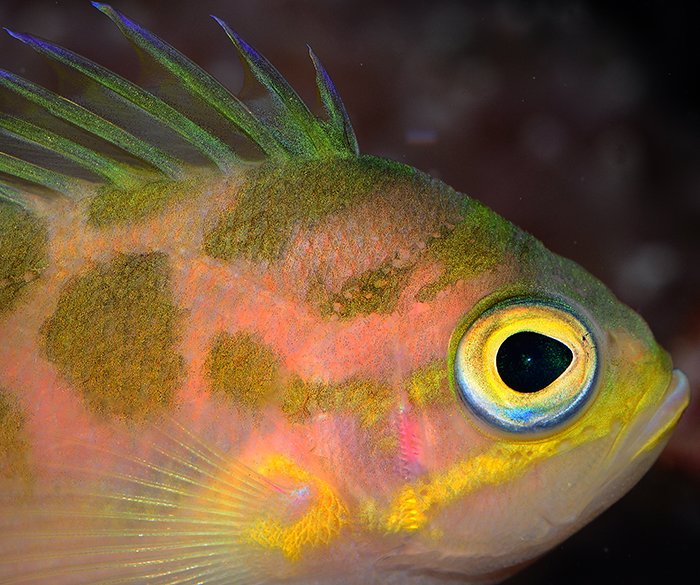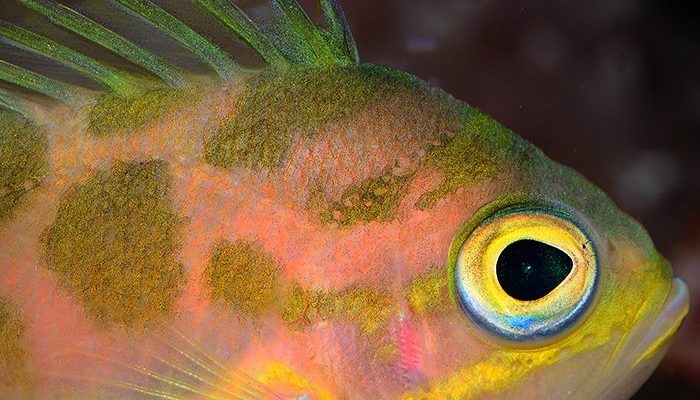
Breeding these beauties can feel daunting. Because, while they’re stunning to look at, Anthias have specific requirements that make them a challenge for many aquarists. Things like their social structure, diet, and environmental needs need to be just right. Let’s dig into the details so you can set the stage for success and maybe become a proud Anthias breeder.
Understanding Anthias: Their Natural Habitat
To begin your journey, it’s crucial to understand where Anthias come from and what makes them tick. These fish typically inhabit coral reefs across the tropical and subtropical oceans. Think of them as the social butterflies of the reef, living in small groups and relying on a well-defined hierarchy. In the wild, you’ll find them darting between corals for food—mainly zooplankton and small crustaceans.
The more you learn about their natural behaviors, the better you’ll prepare your breeding setup. Anthias are known for their sex change abilities; the dominant female can change to male when necessary. This unique trait means you may need a few females around to keep things in balance, which is essential for breeding efforts. Without this social structure, you might end up with stressed fish instead of happy, breeding pairs.
Setting Up the Perfect Aquarium Environment
Creating the right environment is key when breeding Anthias. First off, you’ll need an adequately sized aquarium—ideally, at least 50 gallons. Think of it as their canvas; the more space they have, the better the artwork of their interactions.
Water quality is critical. Anthias prefer clean, well-oxygenated water, so make sure to invest in a good filtration system. You can also use a protein skimmer to help keep the water pristine. Here are some ideal water parameters to aim for:
- Temperature: 74 – 78°F (23 – 26°C)
- pH level: 8.1 – 8.4
- Salinity: 1.020 – 1.025 SG
Adding live rock and coral can create a more natural habitat, providing hiding spots and grazing opportunities. If they feel safe and secure, Anthias are more likely to thrive and breed.
Choosing the Right Species of Anthias
Not all Anthias species are equal when it comes to breeding. Some of the most popular choices include the Lyretail Anthias and the Squareback Anthias. Each species has unique traits, behaviors, and requirements that can affect their breeding success.
Lyretail Anthias are quite visually stunning, with vibrant colors and lively personalities. They tend to be more forgiving regarding water conditions, making them great for beginners. Meanwhile, Squareback Anthias are known for their hardiness and adaptability but can sometimes be a bit shy.
When choosing your species, it’s also good to consider the size of your setup. If you’re working with a smaller tank, you might want to stick with just a pair or a small harem of females. This prevents competition and stress, which can derail your breeding efforts.
Feeding: Fuel for Breeding
Here’s the thing: if you want your Anthias to breed, you’ve got to feed them right. In their natural habitat, these fish eat mostly zooplankton, which can be tricky to replicate. However, you can feed them a variety of high-quality foods to encourage healthy growth and breeding behaviors.
Consider offering a mix of:
- Frozen foods: Mysis shrimp and brine shrimp are excellent choices.
- Pellets: High-quality sinking pellets designed for carnivorous fish.
- Live foods: If you can manage it, live foods can stimulate their breeding conditions.
Feeding multiple times a day (around 3-4 small feedings) can mimic their natural feeding habits and keep them active and healthy, which is crucial for breeding success.
Creating a Breeding Pair
Forming a breeding pair can be one of the most rewarding parts of your Anthias adventure. Typically, you want a dominant male and several females to help maintain a natural social structure. Here’s how to create that perfect pair:
1. Select your fish: Start with a group of juvenile Anthias; the male will often reveal himself over time as he grows larger and more colorful.
2. Observe behavior: Once you notice the dominant male, keep an eye on him with selected females. Look for signs of courtship rituals, like swimming close together or nipping at each other.
3. Monitor conditions: Stress can disrupt breeding. Make sure the water quality stays ideal, and provide plenty of hiding spots for the females to retreat if they feel threatened.
4. Be patient: It can take time for a pair to establish and begin breeding. But once they’re comfortable, you might just witness a beautiful spawning dance.
Common Breeding Challenges
Even with the best setup, breeding Anthias can come with its own set of challenges. Sometimes they just won’t spawn, or you may notice aggression among your fish. Here are some common hurdles and how to deal with them:
1. Stress: High levels of stress can cause your fish to stop breeding. This can be due to water quality, tank mates, or environmental conditions. Ensure plenty of hiding spots and a peaceful environment.
2. Diet Issues: If your fish aren’t getting the right nutrition, their health and breeding behaviors can deteriorate. Stick to a varied feeding routine and consider adding supplements like vitamins to their diet.
3. Overcrowding: Too many fish can lead to stress and territorial disputes. Make sure your tank isn’t overstocked, and monitor behavior closely.
Remember, breeding fish, especially Anthias, requires patience. It’s not always a quick process, but with the right conditions and care, it’s definitely achievable.
Harvesting and Raising Fry
If you’re lucky enough to witness spawning, the real challenge begins: raising the fry. Here’s what to keep in mind:
– Fry Survival: Baby Anthias are tiny and vulnerable. They need specially prepared foods like infusoria or finely crushed powdered food since regular fish food is too large for them.
– Water Quality: Keep the water pristine to help with fry development. A separate rearing tank is often necessary to avoid competition and predation from adult fish.
– Growth Rate: Fry can grow pretty quickly if conditions are right. Keep an eye on their development; as they grow, you can gradually introduce other types of food.
– Social Structure: Maintaining a healthy number of fish can help develop their social structure as they grow. Aim to keep a small group of fry together, mimicking their natural environment.
Final Thoughts: Your Journey with Anthias
Breeding Anthias in captivity is like embarking on a delightful adventure. While it comes with challenges, the rewards are well worth the effort. You’ll learn so much about these fascinating fish, their behaviors, and their needs along the way.
Remember, patience and persistence are your best friends. Each step you take sets the stage for future success. So, gather your supplies, create that perfect environment, and enjoy the captivating world of Anthias breeding. Happy fish keeping!

